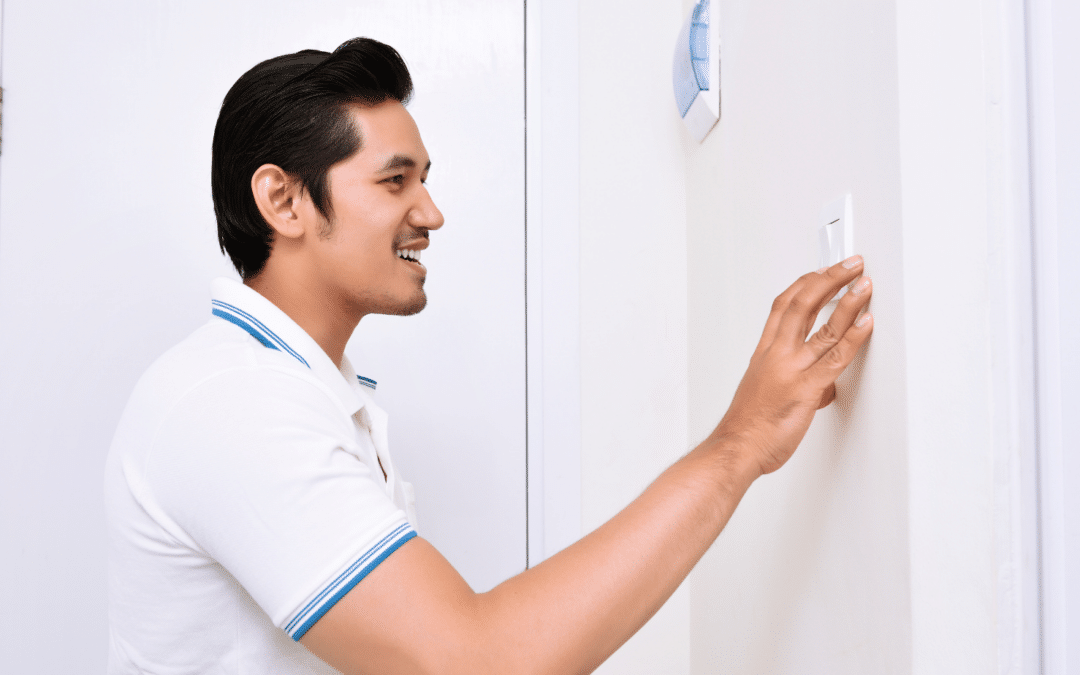Light switches are common in every home and type of building on the planet that receives electricity. But have you ever wondered how they work and what choices are available to you when shopping for switches? (Hint: There are a lot!)
How does a light switch work?
A basic light switch is a simple device that controls the flow of electricity to the lights and appliances in your home. It works by connecting the light fixture or outlet through the wires in the switch to the home’s electrical current through electrical cables hidden in the walls and ceilings. Flipping the switch interrupts and allows the flow of electricity to the light fixture, turning it off and on.
Switch components
A basic light switch consists of three components. The toggle or rocker is the part you physically manipulate to turn the light on or off. The contacts inside the switch make or break the electrical current.
Finally, the connection points for the wires that supply electricity to the switch and carry it to the light are called terminals or screws.
Wiring
There are typically three wires that work together in the standard light switch setup. The power source or hot wire carries the electrical current to the switch. The load wire carries the current from the switch to the light fixture, and the neutral wire completes the circuit so electricity can flow.
Operation of the switch
When the switch is “off,” the contacts inside are open or “interrupted.” There is a gap in the circuit, and electricity cannot flow from the power source to the light. When the switch is “on,” it closes the contacts inside the switch, completing the circuit and allowing electricity to flow.
This simple act of opening and closing the circuit by manipulating the switch allows lights to be turned on and off as needed.
Choices in light switches
Several types of switches are used to control light fixtures, appliances, and other devices that use electricity. Consider the features the switch should have to meet your needs, and then narrow your selection while considering goals such as energy conservation or timed lighting.
Some of the most common switch types include:
- Single-pole. The most common option for residential buildings, controlling bedrooms, bathrooms, kitchen lights, and wall outlets throughout the home.
- Double-pole. Best for controlling a 240-volt appliance or fixture from a single wall location. More common for industrial applications but can be found in homes controlling electric water heaters or air conditioners.
- Three-way. Used in pairs. Controls a light fixture from two different locations, such as from the top and bottom of the stairs or in a room with two entry points.
- Four-way. Controls a light fixture from three or more locations. Requires extra care when replacing.
- Dimmer. Comes in a variety of styles such as rotary, slide, and touch, and controls the brightness level of the light bulbs.
- Motion-sensor. Designed to turn on the lights when motion is detected. Turns off after a period has elapsed with no motion. Because it helps conserve energy, this type of switch is common in places such as public restrooms.
- Smart switch. Controlled remotely using a smartphone or voice assistant, like Alexa.
- Timer. Turns a light fixture on and off at specific times of day.
With so many choices available, homeowners can truly custom design the light switch functionality in their homes. When upgrading or replacing old switches, consult a professional to ensure you consider all the options and have the devices installed safely to enjoy for a long time.
Learn more about maintaining the light switches in your home: How Long Should Light Switches and Electrical Outlets Last?
How Can We Help?
At Shockley Electric, we address important home safety issues such as power surges, faulty electrical wiring, and potential fire hazards when we do electrical preventive maintenance in homes or commercial buildings.
We are licensed, trained, and skilled in safety-proofing your home, and we are committed to the safety and well-being of our customers.
If you are experiencing electrical problems in your home or aren’t sure if your home is protected from electrical hazards, schedule an in-home estimate or appointment with us today. Fill out our form or call us now for a free estimate!

